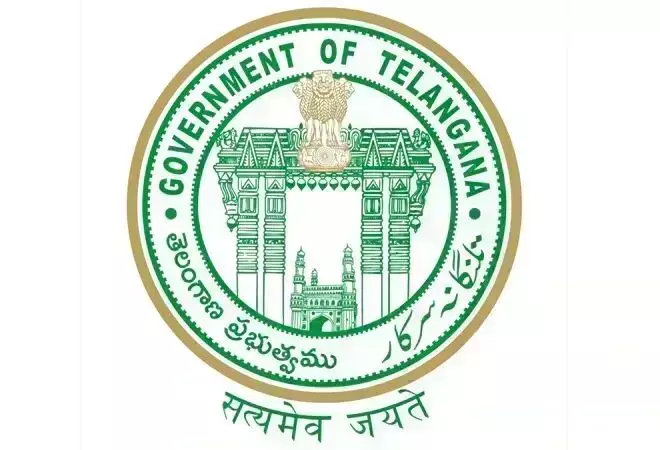What's wrong with Charminar, Kakatiya Thoranam in Telangana emblem, question historians
The ongoing debate surrounding the Telangana State emblem underscores the delicate balance between modernisation and cultural preservation.

HYDERABAD: Historians and activists in Telangana are outraged over the Congress Government's proposal to alter the State emblem of Telangana. The Government recently proposed removing prominent symbols like the Kakatiya Thoranam and Charminar from the emblem, sparking concerns about erasing the state's rich history and cultural identity. Historians urged the Government to reconsider its decision and instead explore ways to improve the existing design.
The current State emblem, adopted in 2014, features the majestic Kakatiya Thoranam at its center, embraced within the iconic Charminar. This central design rests against a verdant green backdrop, forming a circular seal. The seal proudly displays inscriptions in Telugu, English, and Urdu, along with the national motto "Satyameva Jayate." This emblem, envisioned by Telangana artist Laxman Aelay, was carefully crafted to represent the diverse traditions, culture, history, and natural beauty that define Telangana.
Also Read: Will former Hyderabad Mayor Mir Zulfiqar Ali uphold AIMIM legacy by winning Charminar Assembly seat?
The emblem designed by Laxman Aley has a crown which is the Lion Capital found on the Ashoka column in Saranath with the four Asiatic lions representing power, courage, pride and confidence reflecting the national spirit. It is perched atop the richly decorated Gateway from the 11-12th Century Kakatiya rulers.
Towards the lower half, the Charminar built in 1591, a symbol of
Hyderabad heritage, is seen through the gateway.
Circling this swathe of over a millennium of history are the colours of green and gold. While green represents prosperity, the Deccani culture and peace, gold represents the soil of Telangana.
However, the current Government has taken aim at the emblem. Speaking during the Assembly session last week, Chief Minister Revanth Reddy said that the Thoranam and Charminar reflected the "aristocratic and dictatorial tendencies" of the Kakatiyas and Nizams. These veiled references also seemed to target former Chief Minister K Chandrashekar Rao (KCR).
Anuradha Reddy, a renowned city-based historian and convenor of the Indian National Trust for Art and Cultural Heritage (INTACH), shed light on the collaborative process that led to the emblem's creation. She emphasised that historians, artists, and other stakeholders were actively involved in its design, ensuring it reflected the State's origins, cultural heritage, and traditions. Anuradha firmly believes that the emblem transcended political affiliations and serves as a powerful symbol of Telangana's unique identity and history. She warned that erasing it would be tantamount to erasing the State's very essence.
Anuradha also vehemently refuted the Government's claims of "monarchy" by highlighting the profound historical significance of the Kakatiya structures, standing tall for over 800 years, and the iconic Charminar, built by the Qutb Shahis over 430 years ago. she argued that both monuments held immense cultural value and deserved recognition as integral parts of Telangana's narrative.
Instead of advocating for a complete overhaul, she proposed exploring modifications that could retain the core essence of the emblem. This could involve changes to the colour scheme, outer design, inscriptions, and language representation, ensuring that the emblem continued to reflect the State's unique cultural tapestry.
Asif Hussain Sohail, a prominent political analyst who participated in the initial discussions surrounding the emblem's design, echoed similar sentiments. He underscored the importance of preserving the Ganga-Jamuni Tehzeeb spirit embodied by the current design. He cautioned against changes that could potentially offend specific communities and disrupt the harmonious representation of diverse cultures within the State.
Nikhil, a passionate history student from the University of Hyderabad, expressed deep concern about the proposed changes. He highlighted the recent inclusion of references to these very dynasties in the officially approved Telangana State song. He viewed the Government's proposal as a misguided attempt to rewrite history and erase significant cultural markers.
The ongoing debate surrounding the Telangana State emblem underscores the delicate balance between modernisation and cultural preservation. As the situation unfolds, it remains to be seen whether the Government would heed the calls to retain the existing design or push forward with its proposed modifications, potentially rewriting the State's historical narrative in the process.


